The bold plan to save Africa's largest forest
The Congo Basin contains the world's second-largest rainforest, crucial for regulating the world's climate. Inside it, a plan to halt the forest's decline is bearing fruit.
With a gentle tug of his left hand, Patrick Wasa-Nziabo eases dozens of kernels from a sun-dried cob and into a large plastic bucket brimming with lemon-yellow corn at his bare feet.
Flanked by an excitable troupe of young children, the 31-year-old is sorting through the plump harvest of maize grown on a patch of fertile land less than half an hour's walk from his village, Nkala, deep in the tropical rainforest of the Democratic Republic of Congo.
"The corn grows so quickly it's difficult for us to process all of it," says Wasa-Nziabo, taking another cob. The children watching him flutter around like the region's distinctive grey parrots overhead. "The earth here is so rich. It nourishes us in many ways. For us, it is sacred."
The people of Nkala's relationship with the forest goes back generations, but in one fundamental way it has recently changed. Under a revolutionary scheme in DR Congo – which is home to the majority of the Congo Basin, the world's second-largest rainforest – the 300 villagers of Nkala were granted 4,100 hectares (16 square miles) of forest in December 2018.
This meant, for the first time in their history, the community had the legal right to own and manage the forest they live in. Two years on, early signs suggest that community ownership could become a powerful tool in halting the decline of the Congo Basin rainforest, while alleviating poverty in one of the world's poorest regions.
"This is an enormous opportunity to transform the country," says Fifi Likunde Mboyo, head of the ministry of environment's community forestry division, the government body managing the scheme. "It is a break away from the past."
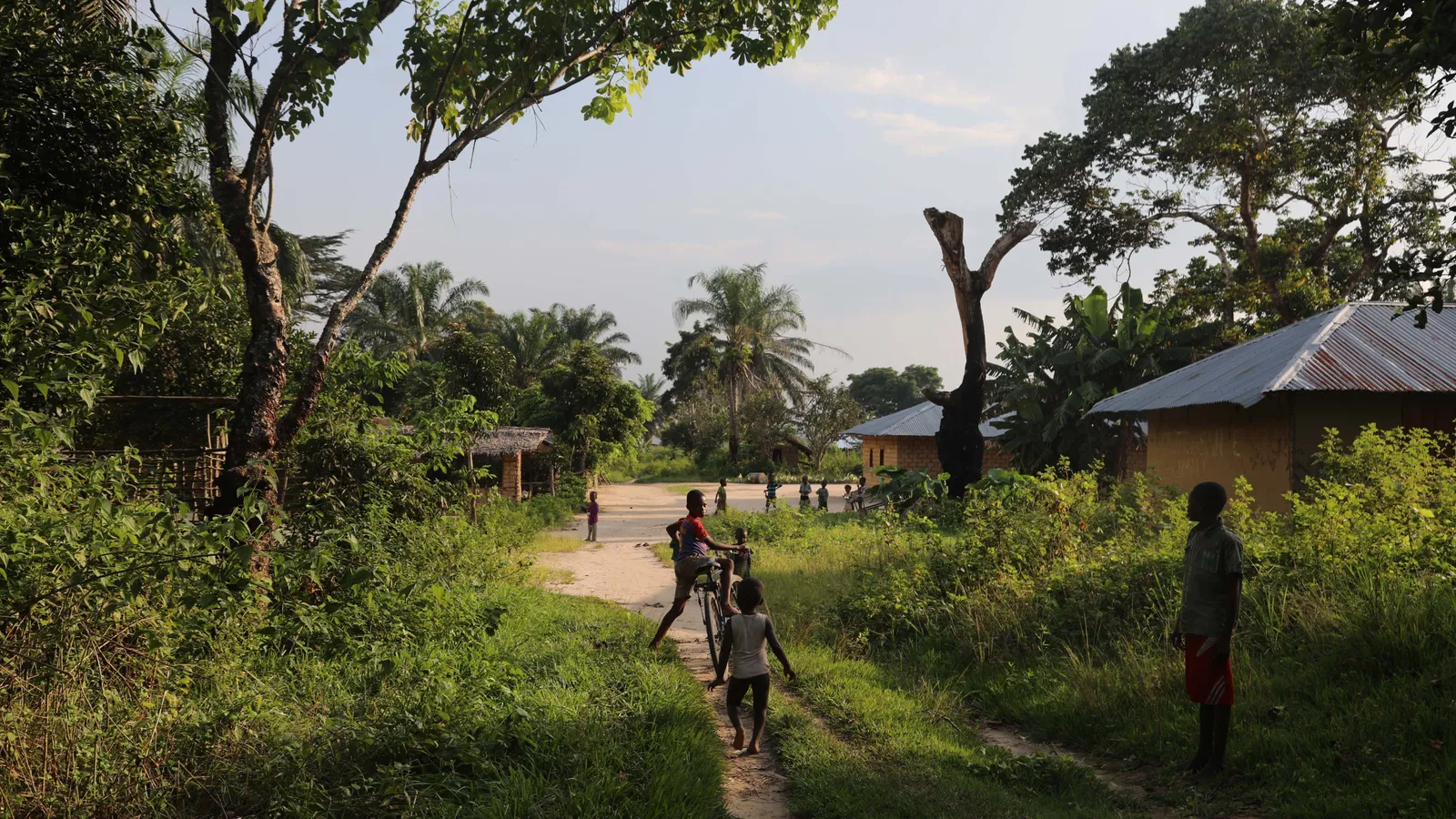
The Congo Basin contains some 314 million hectares (1.2 million sq miles) of primary rainforest – the oldest, densest and most ecologically significant kind. The rainforest plays a crucial role in the stability of the world's climate, and spans across six countries in central Africa: the Democratic Republic of Congo, Cameroon, the Central African Republic, the Republic of Congo, Gabon and Equatorial Guinea. By comparison, the Amazon contains 519 million hectares (2 million sq miles) of primary rainforest.
Congo Basin forests make up the second largest massif of unbroken tropical primary forest after the Amazon, so their clearing will surely be disastrous, especially for biodiversity – Alexandra Tyukavina
Taller and more resilient to climate change than the Amazon rainforest, the Congo Basin's trees soak up some 1.2 billion tonnes of carbon dioxide each year and store one third more carbon over the same area of land than those of the Amazon. Typically more tree species are found in one hectare of the Congo Basin rainforest than all the native tree species of the UK combined. It also houses the world's most extensive tropical peatland, an estimated 10,000 species of tropical plants and endangered species that can't be found anywhere else in the world, such as forest elephants, lowland and mountain gorillas, and okapis, a unique mammal that is perhaps best described as a mix between a giraffe and a zebra.
"Being a major storehouse of biodiversity, it provides huge services to all of humanity," says Simon Lewis, a geographer at University College London who has been carrying out field work in the Congo Basin since 2002. "The intact rainforest in the Congo Basin, which until now has suffered less deforestation and shown more climate resilience than the Amazon, has played a very important role."
However, Lewis has found in his research that climate change, manifested through increasing heat and drought, is reducing the ability of the rainforest to absorb carbon dioxide. The study, which looked at 135,625 trees across 244 African plots in 11 countries, found that trees in the Congo Basin, whose growth has been stifled by the extreme weather, started to lose their ability to absorb carbon dioxide as early as 2010.
As the individual trees of the Congo Basin are losing their ability to soak up carbon, the number of trees in the rainforest is also diminishing. Industrial activity – such as palm oil plantations, logging and mining – is contributing to deforestation, at the same time encroaching on animal habitats and disrupting the balance of ecosystems. Primary rainforest loss in the Congo Basin more than doubled between the first and second half of the period from 2002 to 2019, according to satellite data analysis by Global Forest Watch, an initiative of the World Resources Institute. In 2019 alone, 590,000 hectares were lost (an area more than half the size of Jamaica).
The rate of deforestation in 57 community concessions in 2019 was 23% lower than the national average and 46% lower than in logging concessions
If these trends continue, there could be no primary rainforest left in the DR Congo by the end of the century, according to one study published in 2018. "Congo Basin forests make up the second largest massif of unbroken tropical primary forest after the Amazon, so their clearing will surely be disastrous, especially for biodiversity," says Alexandra Tyukavina, a geographical scientist at the University of Maryland in the US, who co-authored the study.
One of the historically significant drivers of deforestation of the DR Congo's rainforest has been small-scale charcoal production and slash-and-burn agriculture – unlike in the Amazon, where industrial-scale logging and agriculture has driven the forest's decline. Some 93% of forest loss between 2000 and 2014 in the DR Congo was due to smallholder agriculture, according to Tyukavina's research, and campaigners say that is part of the reason why the DR Congo's community forest law is particularly compelling.
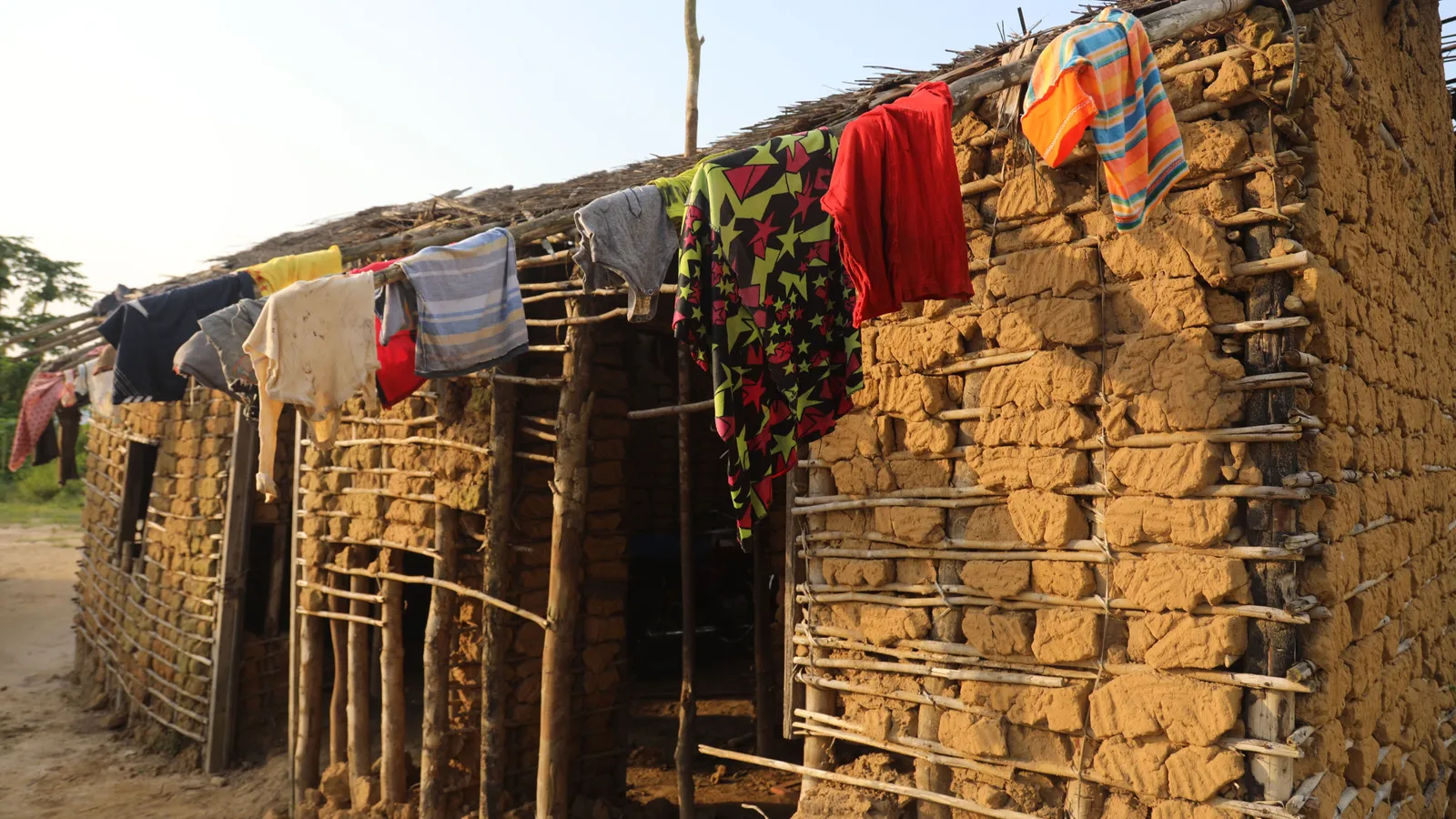
The belief behind the community concessions is that villages with ownership of the land have a strong incentive to manage it in a sustainable way. And there's evidence supporting that premise, demonstrated through research by the World Resources Institute into 14 forest-rich countries across Latin America, Africa, and Asia. The institute found that communities "maintain or improve their forests' carbon storage" when they have ownership.
We're at a critical juncture. It is a step-change in how the international community sees best to preserve forests – Ana Osuna Orozco
Early evidence in the DR Congo experiment is bearing this out too. Analysis by the Rainforest Foundation UK (RFUK), a non-profit monitoring and facilitating the implementation of the DR Congo's community concessions, found the rate of deforestation in 57 community concessions in 2019 was 23% lower than the national average and 46% lower than in logging concessions. The data, which stretches back to 2001, shows that the traditionally occupied lands (where local people have been managing the forest as effectively their own) have historically had lower levels of deforestation.
"We're at a critical juncture," says Ana Osuna Orozco, DR Congo coordinator for RFUK. "It is a step-change in how the international community sees best to preserve forests. The days of the militarised approach, guards and guns, is over. Rather than just being an add-on, community forestry is now being considered as a mainstream model for forest management."
It has been a long time coming for the DR Congo. The concept of community forestry was first mentioned in the 2002 Forestry Code. That was followed by a prime minister's decree in 2014, specifying how communities could obtain forestry concessions, and a ministerial order in 2016 outlining how they should be managed sustainably, with the first concession granted to the people of Bolima, in Équateur province, in February 2017. The National Strategy for Community Forestry published in June 2018 set out the future guiding principles.
More than two million hectares (7,700 sq miles) of the DR Congo's community rainforest concessions have or are in the process of being awarded to date, according to a database maintained by RFUK. The concessions range from the vast Salonga National Park to the conflict-ridden North Kivu. The RFUK estimates that up to 75 million hectares (290,000 sq miles) – an area of land more than five times the size of England – are potentially available for communities under the scheme.
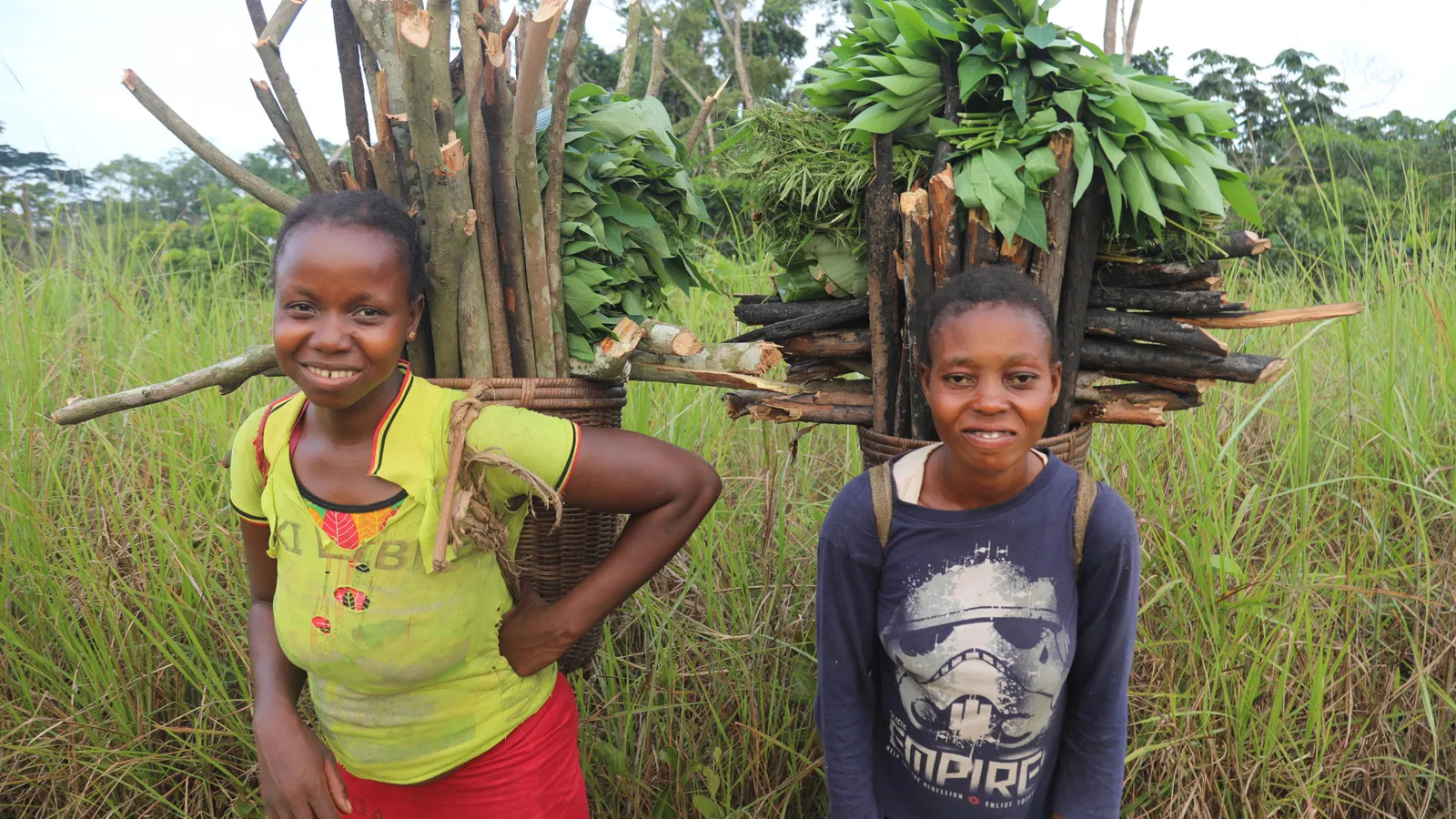
For Patrick Wasa-Nziabo and the other locals in his remote village of Nkala, some three-days drive north along 450km (280 miles) of backbreaking dirt roads from the DR Congo's capital Kinshasa or a two-day journey up the Congo River in slow wooden baleinières, or whale boats, crippling unemployment had long been an issue. In a country where extreme poverty, which is greater in rural areas, sees 72% of the population living on less than $1.90 (£1.40) a day, the allure of illegally catching wildlife within the forest proved too tempting.
"Just one successful hunt could pay for a year's school fees for your child," says Wasa-Nziabo. "It could guarantee that your family eats properly for a while without worrying about a lack of money."
But since Nkala was granted its concession just over two years ago, there has been a wave of crop diversification on family farms – bringing in corn, pineapples and manioc – to insure against more extreme, unpredictable weather and to broaden potential income streams for the community. This is one of the requirements for sustainable management of the concessions. Co-operatives have been formed to sell produce such as weaved mats from the palms of the arrowroot tree, providing work for all of the village's women.
Innocent Leti, regional coordinator for Mbou Mon Tour, a local NGO involved in locals obtaining the concessions, believes the village is transforming. "When I first came here, Nkala was very remote and underdeveloped," he says. "But today they have built bridges to cross the rivers, a school has opened, daily life has improved."
It's a picture emerging across the varied landscapes of the DR Congo. Some 320km (200 miles) further up the River Congo, the 500 indigenous people of Lokolama were granted 10,000 hectares (39 sq miles) in February 2019 with the support of Greenpeace Africa, and are now harvesting honey, tomatoes and caterpillars. In Yanonge, more than 640km (400 miles) to the east, the Center for International Forestry Research (CIFOR) is helping four remote forest communities establish another community concession, through cultivating peanuts and plantain. In the central Kasai region, known for its matrilineal clans, a concession run by women is in the application stage.
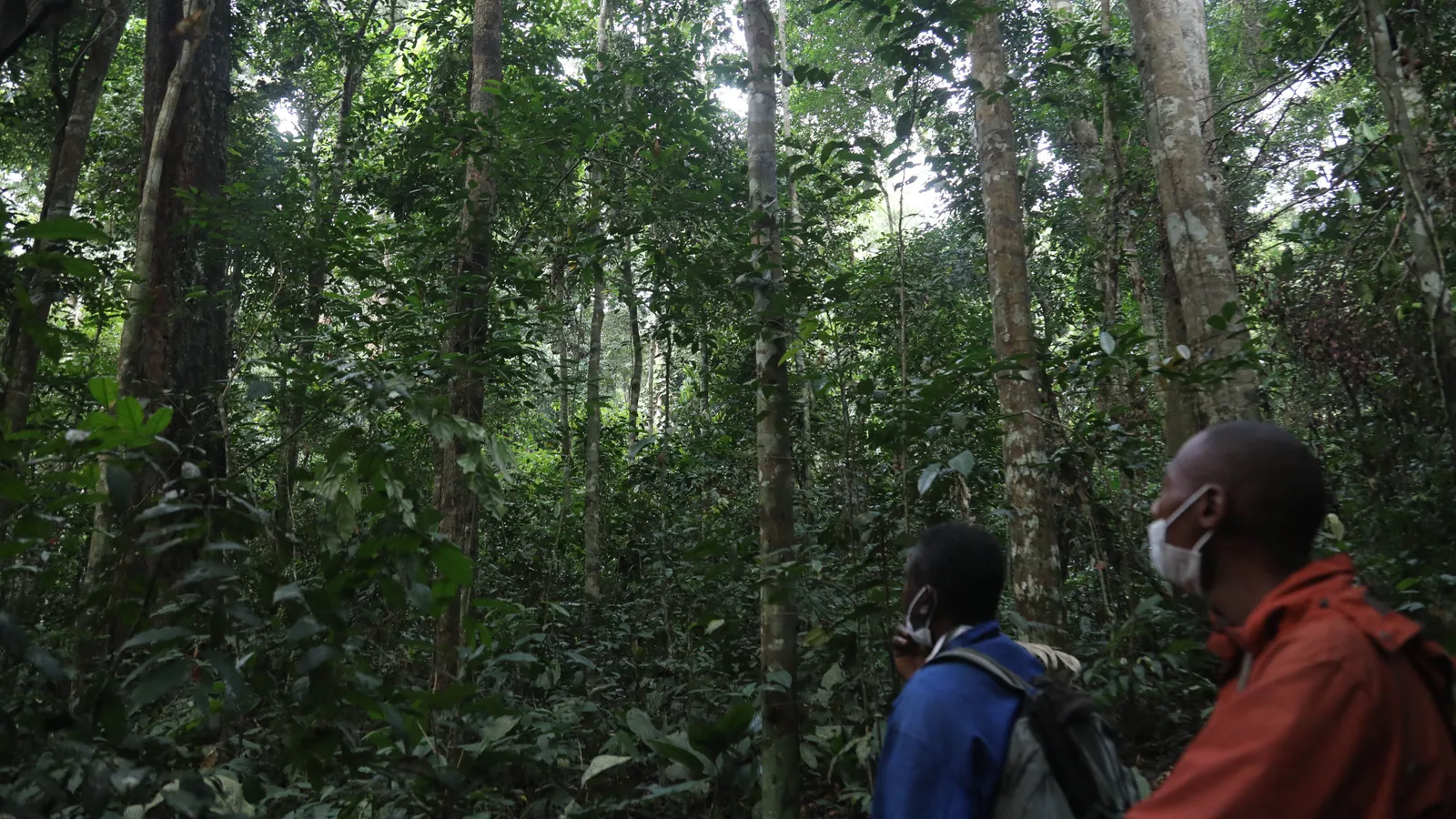
Each community, working with local government, must demarcate the concessions with the blessing of neighbouring villages through participatory mapping to avoid disputes, carry out biodiversity and socioeconomic studies on the land, and develop simple forest management and land use plans to outline the proposed activities and how they will be done sustainably.
At Nkala, the part of land where activity is permitted is clearly marked out by a rare opening in the dense forest. Gloria Esefa, 22, now gathers wood and cassava leaves from the section open to cultivation and sells the produce at the nearby market town of Tsumbiri. "Everything that I earn from this, I can keep for myself, as long as I take reasonable amounts. That is what the village agreed," she says. "It has given me freedom."
Once the concession is granted, local development committees must then be formed within the village to deal with any land management decisions or conflicts. "Before, outsiders would come to our land and cut down our trees," says Paulin Ebabu, president of Nkala's committee. "But since our rights to this land have been recognised by law, it has not happened any more."
The costs for all those requirements, however, are significant. While communities aren't charged application fees, figures published by CIFOR reveal that the financing needed for two of the concessions it supported in the DR Congo, including meetings, paperwork and legal compliance, came at a price of $109,000 (£80,000) and $153,000 (£112,000) respectively. For communities where many, if not all are living in poverty, such sums are impossibly high .
Besides cost, a slew of other issues are hampering the scheme, including the fact that NGOs say many of the DR Congo's remote communities are not aware of the opportunity. For those that are, the complex processes required to obtain a community concession makes it practically impossible to do without the support and guidance of NGOs.
"It's a challenge," says Serge Ngwato, Greenpeace Africa's manager for the community concession in Lokolama. "The technical requirements are currently too difficult for communities and it costs too much money. But this can be smoothed out by simplifying the legal processes and allowing communities to begin earning money through the model during the application."
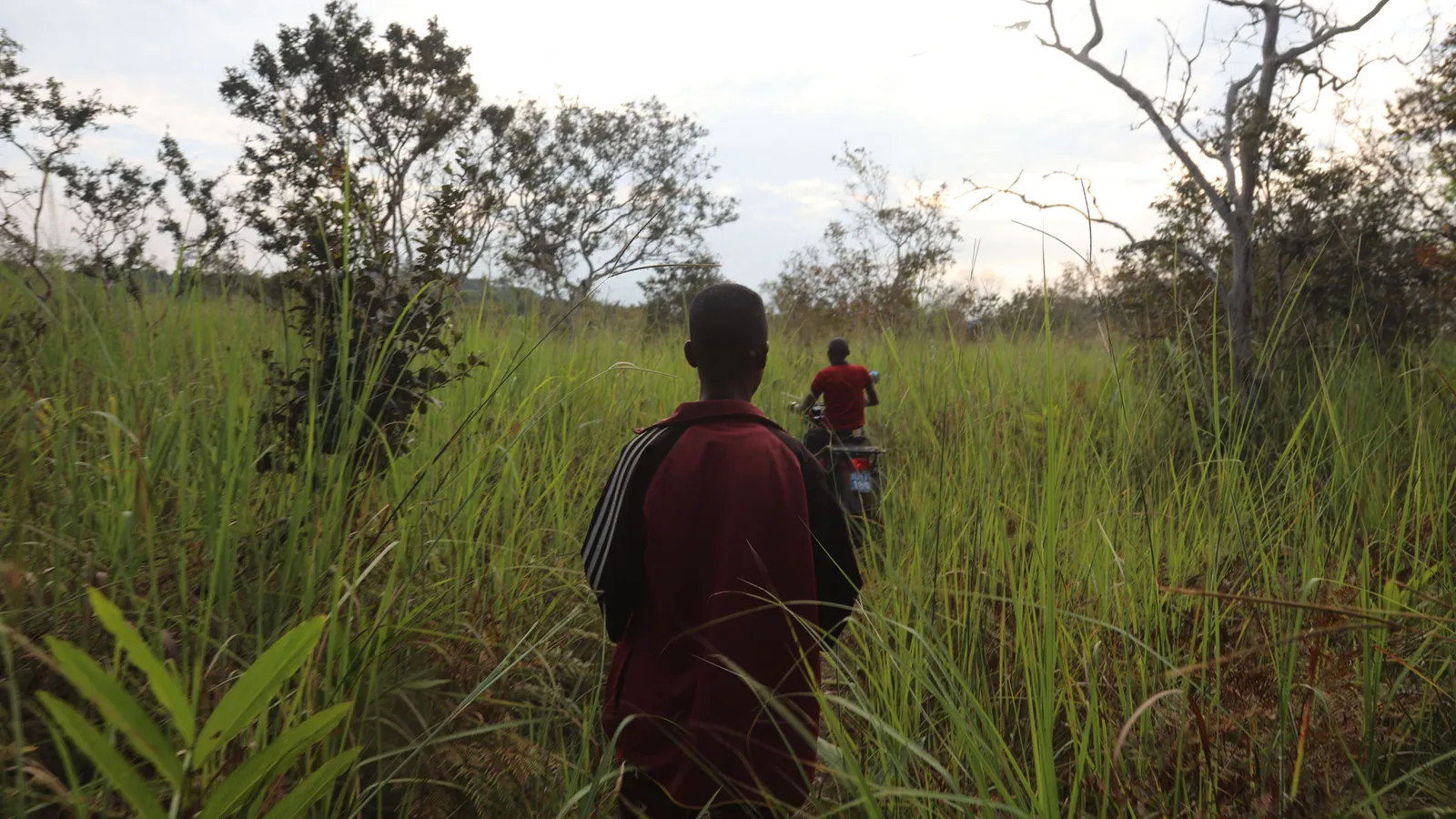
Despite these hurdles, community forestry experts say that the DR Congo's scheme is an improvement on similar initiatives tested in neighbouring countries such as Cameroon, Gabon and the Central African Republic.
"In the DR Congo, if you manage the land well you keep it in perpetuity – in Cameroon, the concessions granted were often non-permanent," says Silvia Ferrari, a forestry scientist at CIFOR based in Kisangani.
In what advocates say is a better platform for long-term sustainability, the DR Congo's concessions also allow 10 times the amount of land for community concessions than other countries, with a varied use of land required by the law. "It's much easier to build a business plan," adds Ferrari. "The DR Congo's concessions are in primary forest, so it is not degraded, and the focus isn't only timber but other income streams."
One local non-profit – Actions for the Protection and Promotion of Endangered Peoples and Species (APEM) – investigated 35 community forestry sites across the country and found the scheme's rollout had had "significant success". But it also found teething problems. Nearly half of concessions analysed only had a single vocation, which goes against the national strategy that promotes multiple forms of land use. There was also a lack of consultation with neighbouring communities when drawing maps, resulting in a "high risk of dispute", APEM found. There was also one case of illegal logging, with semi-industrial tools being used, when only lighter tools like chainsaws are permitted.
Government officials, constrained by strict regulations aimed at preventing malfeasance in one of the world's most corrupt countries, also complain that limited financing is a stumbling block. Despite being the second largest rainforest in the world, one analysis found that the Congo Basin only receives 11.5% of international funding for nature protection and sustainable forest management in tropical areas, compared with 34% in the Amazon Basin and 54.5% in the South East Asian Basin.
"The state has serious problems due to the insufficient budget for the country," says the ministry of environment's Mboyo. "And we can only rely on our donors who apparently do not really finance our projects, only procedures."
But in a country where ancestral land rights are recognised but not always respected, the government believes community forestry concessions will provide unprecedented new levels of protection. "This is the first time in history that indigenous peoples [in the DRC] will have official forest concessions," says Mboyo.
At the same time, indigenous people are soon set to have their land rights legally recognised by the state – under the 1973 General Property Law, all land in the country belongs to the government. The bill, which was passed by the DR Congo's National Assembly in November 2020 and is set to be given the green light by the country’s senate in March 2021, will not only confirm indigenous groups' land rights, but also provide free education and healthcare.
"It's important to say that this law is a great opportunity and the benefits of it will be integrated with the community forestry law," says Patrick Saïdi, coordinator of the non-profit Dynamics of Indigenous Peoples Groups, who is based in DR Congo and has been campaigning for indigenous land rights since 2009.
It's another reason for cautious optimism about this radical project transforming ownership of the DR Congo's rainforests and the lives of the people that live in it. If the concessions are able to fulfill their potential, they could go a long way in protecting and preserving the second-largest rainforest in the world – and with it the future of the planet.
"Our lives are now even more connected with the forest than they were before," says Wasa-Nziabo. "Our fates will be the same. That gives us great motivation."
Source
Language of the news reported
Related content:
Copyright © Source (mentioned above). All rights reserved. The Land Portal distributes materials without the copyright owner’s permission based on the “fair use” doctrine of copyright, meaning that we post news articles for non-commercial, informative purposes. If you are the owner of the article or report and would like it to be removed, please contact us at hello@landportal.info and we will remove the posting immediately.
Various news items related to land governance are posted on the Land Portal every day by the Land Portal users, from various sources, such as news organizations and other institutions and individuals, representing a diversity of positions on every topic. The copyright lies with the source of the article; the Land Portal Foundation does not have the legal right to edit or correct the article, nor does the Foundation endorse its content. To make corrections or ask for permission to republish or other authorized use of this material, please contact the copyright holder.
